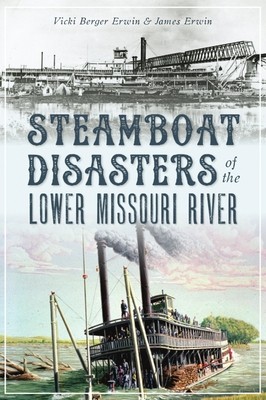
- We will send in 10–14 business days.
- Author: Vicki Berger Erwin
- Publisher: History Press
- ISBN-10: 1467143251
- ISBN-13: 9781467143257
- Format: 15.2 x 22.6 x 1.3 cm, minkšti viršeliai
- Language: English
- SAVE -10% with code: EXTRA
Steamboat Disasters of the Lower Missouri River (e-book) (used book) | bookbook.eu
Reviews
Description
During the nineteenth century, more than three hundred boats met their end in the steamboat graveyard that was the Lower Missouri River, from Omaha to its mouth. Although derided as little more than an orderly pile of kindling, steamboats were, in fact, technological marvels superbly adapted to the river's conditions. Their light superstructure and long, wide, flat hulls powered by high-pressure engines drew so little water that they could cruise on a heavy dew even when fully loaded. But these same characteristics made them susceptible to fires, explosions and snags--tree trunks ripped from the banks, hiding under the water's surface. Authors Vicki and James Erwin detail the perils that steamboats, their passengers and crews faced on every voyage.
EXTRA 10 % discount with code: EXTRA
The promotion ends in 21d.04:02:44
The discount code is valid when purchasing from 10 €. Discounts do not stack.
- Author: Vicki Berger Erwin
- Publisher: History Press
- ISBN-10: 1467143251
- ISBN-13: 9781467143257
- Format: 15.2 x 22.6 x 1.3 cm, minkšti viršeliai
- Language: English English
During the nineteenth century, more than three hundred boats met their end in the steamboat graveyard that was the Lower Missouri River, from Omaha to its mouth. Although derided as little more than an orderly pile of kindling, steamboats were, in fact, technological marvels superbly adapted to the river's conditions. Their light superstructure and long, wide, flat hulls powered by high-pressure engines drew so little water that they could cruise on a heavy dew even when fully loaded. But these same characteristics made them susceptible to fires, explosions and snags--tree trunks ripped from the banks, hiding under the water's surface. Authors Vicki and James Erwin detail the perils that steamboats, their passengers and crews faced on every voyage.


Reviews